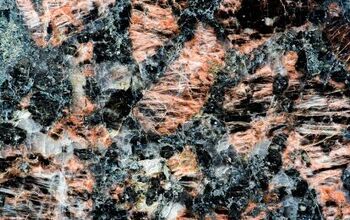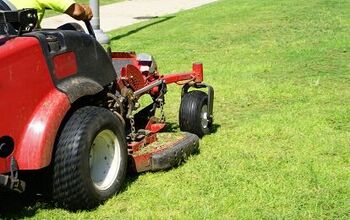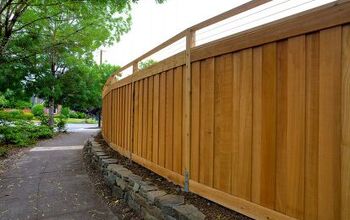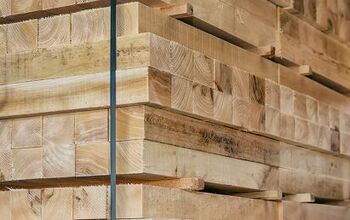Seven Pollinators You Want In Your Yard

Pollinators are essential for the survival of Earth as we know it. They allow many fruits, vegetables, flowers, and other plants to survive and reproduce. Many pollinators also offer other benefits to the ecosystems where they live, and they often help with pest control in your gardens. Before you try to attract them to your yard, however, you need to know what animals and insects are the best pollinators.
Some of the best pollinators that you want to have in your yard include bees, butterflies, and ladybugs. Ladybugs, in particular, are great, as they eat pests like aphids. Several birds, including hummingbirds, are also exceptional pollinators. Even some wasps are beneficial pollinators. Some nocturnal pollinators you want in your garden to propagate night-blooming species include some bats and moths.
Every garden can benefit from pollinators. If your garden is struggling to propagate due to lack of pollination, then you want to discover which animals and insects can help your garden. Below is a list of some of the best and most popular pollinators, as well as several top tips on attracting them to your garden.
Seven Pollinators You Want To Attract To Your Garden
1. Bees
Bees are one of the most important pollinators on the planet. Not only do these famous yellow and black insects give us delicious honey, but they also help many plants reproduce.
Bees are such great pollinators thanks to their small and furry bodies. They can reach into all sorts of differently shaped flowers, and pollen easily sticks to their furry outer layer. This makes transferring pollen from one plant to another easy.
Bees only sting when they feel threatened or to protect their hive, so the risk of a sting is minimal. Every garden can benefit from the presence of bees.
2. Butterflies
Of all the pollinators in the world, butterflies might just be the most beautiful. These colorfully winged insects are not only a joy to look at, but vital to plant fertilization. Butterflies may have a long and awkward shape, but they also have a very long mouth, called a proboscis, which they use to reach deep into flowers in search of nectar. These proboscis are also incredible at transferring pollen from plant to plant.
3. Birds
While many birds eat insects and small animals, there are a select few that prefer dining on sweet flower nectar. This nectar-based diet also makes these birds fantastic pollinators. The most famous pollinating bird is the hummingbird, but they aren’t the only birds that pollinate plants. Other birds that pollinate plants include orioles, honeyeaters, and even some parrot species.
These birds all have specialized beaks and tongues that can reach nectar, and in turn, transfer pollen from one plant to another. What makes birds unique pollinators you want in your garden is their ability to travel long distances. This means they can pollinate plants over much larger areas than insects.
4. Moths
Moths might not be the most desirable insects indoors, but some of these nocturnal flying insects are important for pollination. Some flowers only bloom at night, which means nocturnal pollinators are essential for their survival.
Hawkmoths and clearwing moths are two of the best pollinating moth species, and you should try and attract them in your yard, especially if you have night-blooming flora.
5. Bats
Another noteworthy nocturnal pollinator is the bat. Many bats feed on insects, but a few species feed on flowers. Bats, like birds, can cover a lot of ground in a short time. This makes them another pollinator that can spread pollen over great distances in a very short amount of time.
Two popular bat species that are great pollinators include the lesser known long-nosed bat and the Mexican long-tongued bat. Other less-common bat species in specific regions are also great pollinators.
6. Ladybugs
Ladybugs are a distinctive beetle famous for their black and red color and polka dot designs. They are some of the best insects to have in your garden. They eat aphids, a pest that can quickly destroy plants. They are also good pollinators.
In addition to eating aphids, ladybugs also enjoy nectar. This means these tiny beetles travel in and out of plants, bouncing around gardens all day long. This makes them diligent pollinators, as well as great natural pest deterrents.
7. Some Wasps
You might think wasps are the last creatures you want to invite into your yard, but some of these stinging bugs are quite beneficial to your garden. Fig wasps and mud daubers are great pollinators and less aggressive than other species. Even less desirable wasps, like yellow jackets, can help pollinate your plants.
Wasps also help deter pests that harm plants. This makes them beneficial to your garden’s overall health.
Top Tips For Attracting Pollinators To Your Yard
1. Plant A Variety Of Plant Types
Variety is the spice of life, and this phrase rings true when you are trying to attract pollinators to your garden. If you want to attract a lot of pollinators, then you should have a lot of different flowers, starting with plants that will bloom in early spring.
Find flowers of different heights, colors, sizes, and shapes. This will promote a wider array of pollinators, as they all have different preferences.
2. Choose The Right Plants For The Pollinators You Want
If you want to attract a particular pollinator, then you need to find out the plants and conditions the insect or animal enjoys most.
Some pollinators like certain colors, and others like particular shapes. Some butterflies need a specific plant to use as a host plant. Use these needs and preferences to help attract the pollinators you want.
3. Don’t Use Pesticides
When you use pesticides, you aren’t only killing garden pests, but you are also messing with the ecosystem of the garden. You can kill some pollinators with pesticides, and you may get rid of insects that attract pollinators to the garden.
Instead of harmful pesticides, try natural ways to get rid of pests in your garden.
4. The More Sun The Better
Most pollinators are cold-blooded. This means they are attracted to plants in sunny locations. This is particularly true in the early spring when temperatures are still low. Cold-blooded pollinators are much more likely to hang around your garden if it is located in a sunny spot.
5. Know Which Pollinators Are Found In Your Region
Before you plant anything to attract pollinators, you should first find out which pollinators are found in your region. Once you find out the most common pollinators that thrive in your area, you can find the best plants to attract these specific insects and animals.
6. Ensure You Always Have Plants Blooming
To keep pollinators constantly coming back to your yard, you must always provide a food source. This means always having flowers in bloom. Stagger your plantings, so there is always something in bloom. You can also add a hummingbird feeder to ensure hummingbirds are always stopping by your garden.
7. Provide A Water Source
Many pollinators like to spend time around flowers where there is also a water source nearby. To attract more pollinators, especially pollinating birds, add a small bird bath or pond near your pollinator garden.
8. Avoid Outdoor Lights In The Garden At Night
Nocturnal animals get confused and distracted by artificial light. Therefore, keep your outdoor lights away from your flower and vegetable garden. The darker the garden, the more nighttime pollinators you’ll attract.
Concluding Notes On Pollinators You Want In Your Yard
Pollinators are essential for the survival of many species, including humans. Some of the best pollinators you should try to attract to your garden include insects like ladybugs, butterflies, bees, and some wasps. Several bird species, including hummingbirds, orioles, and honeyeaters, are great pollinators. Two of the best nighttime pollinators are some bat and moth species.
Related Guides:
- 12 Plants That Will Bring Butterflies Into Your Yard
- 12 Spring Flowers That Bloom Quickly
- How To Attract Birds To Your Yard

Tom Gaffey is an expert writer who currently resides in Washington D.C. Tom has a passion for real estate and home improvement writing, as well as travel and lifestyle writing. He lived the last twelve years in Hawaii where he worked closely with luxury resorts and event planners, mastering his knowledge of aesthetics and luxury products. This is where he found his passion for home improvement and a keen interest in DIY projects. Currently, Tom resides in Washington D.C, and also working on his debut fiction novel.
More by Tom Gaffey












![10 Best Electric Lawn Mowers - [2022 Reviews & Top Rated Models]](https://cdn-fastly.upgradedhome.com/media/2023/07/31/9070486/10-best-electric-lawn-mowers-2022-reviews-top-rated-models.jpg?size=350x220)
![The 5 Best Angle Grinders – [2022 Reviews & Buyer's Guide]](https://cdn-fastly.upgradedhome.com/media/2023/07/31/9071326/the-5-best-angle-grinders-2022-reviews-buyer-s-guide.jpg?size=350x220)













